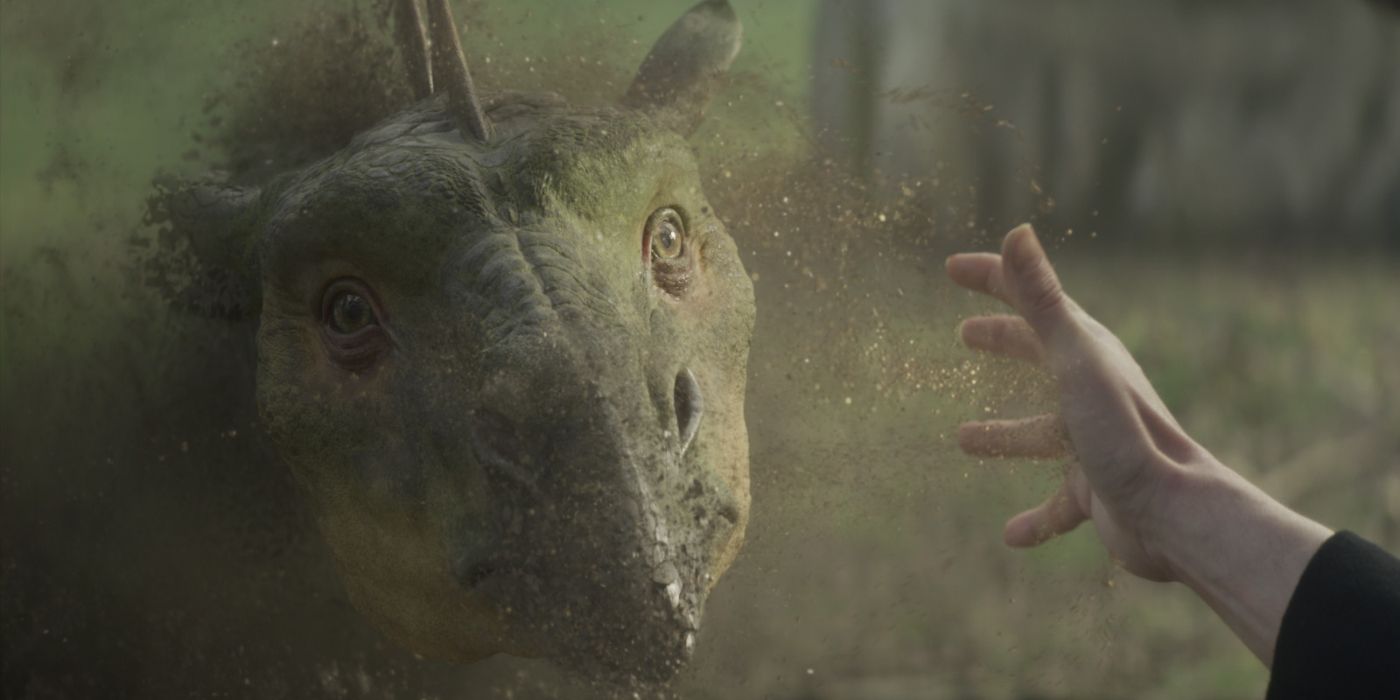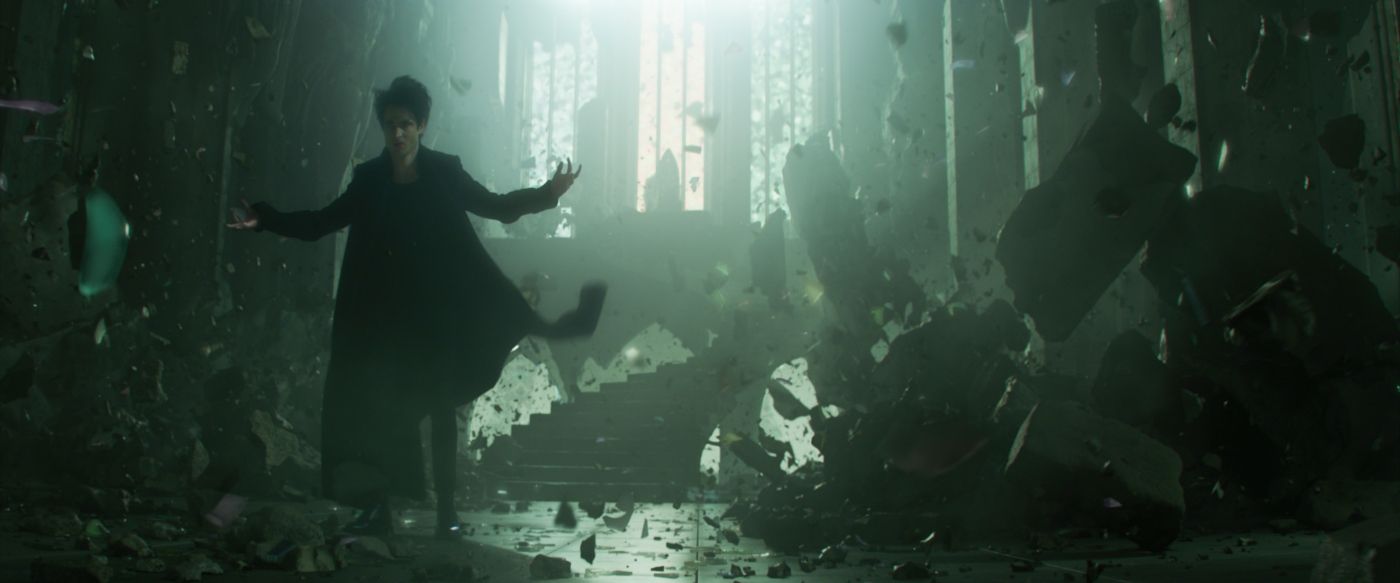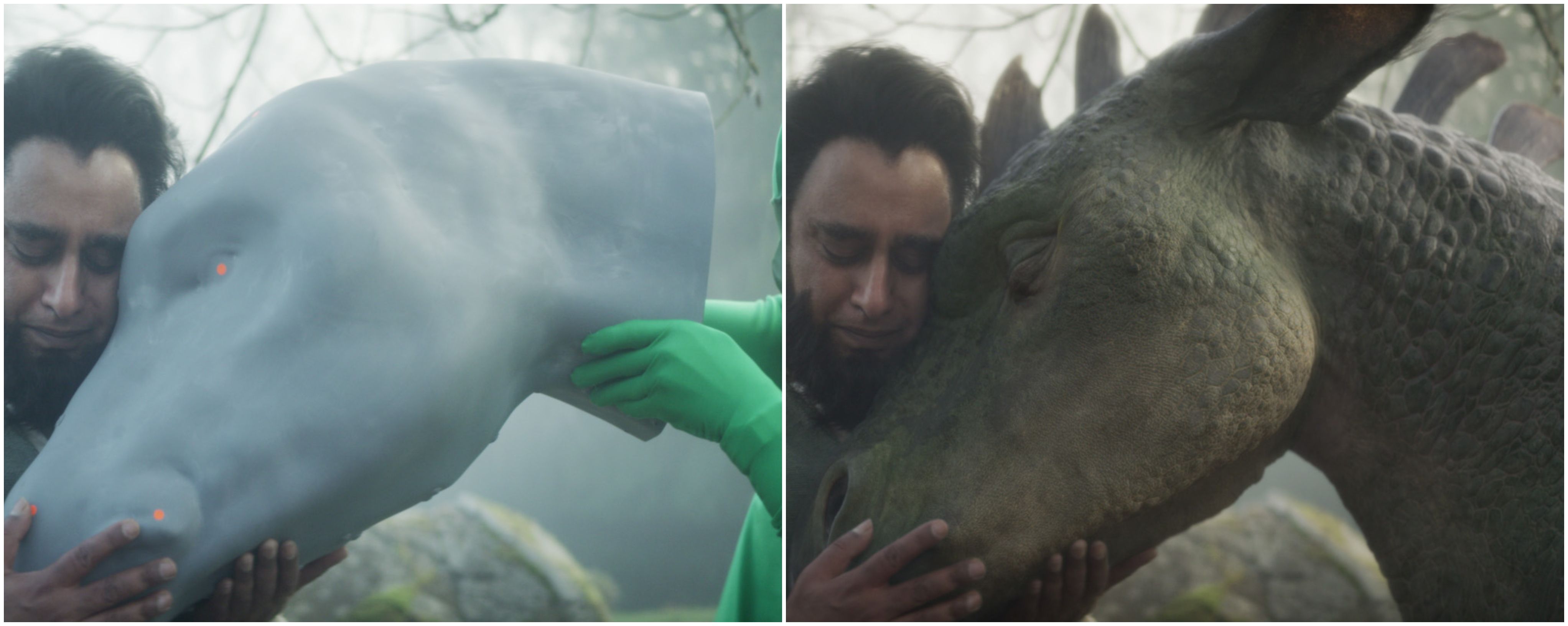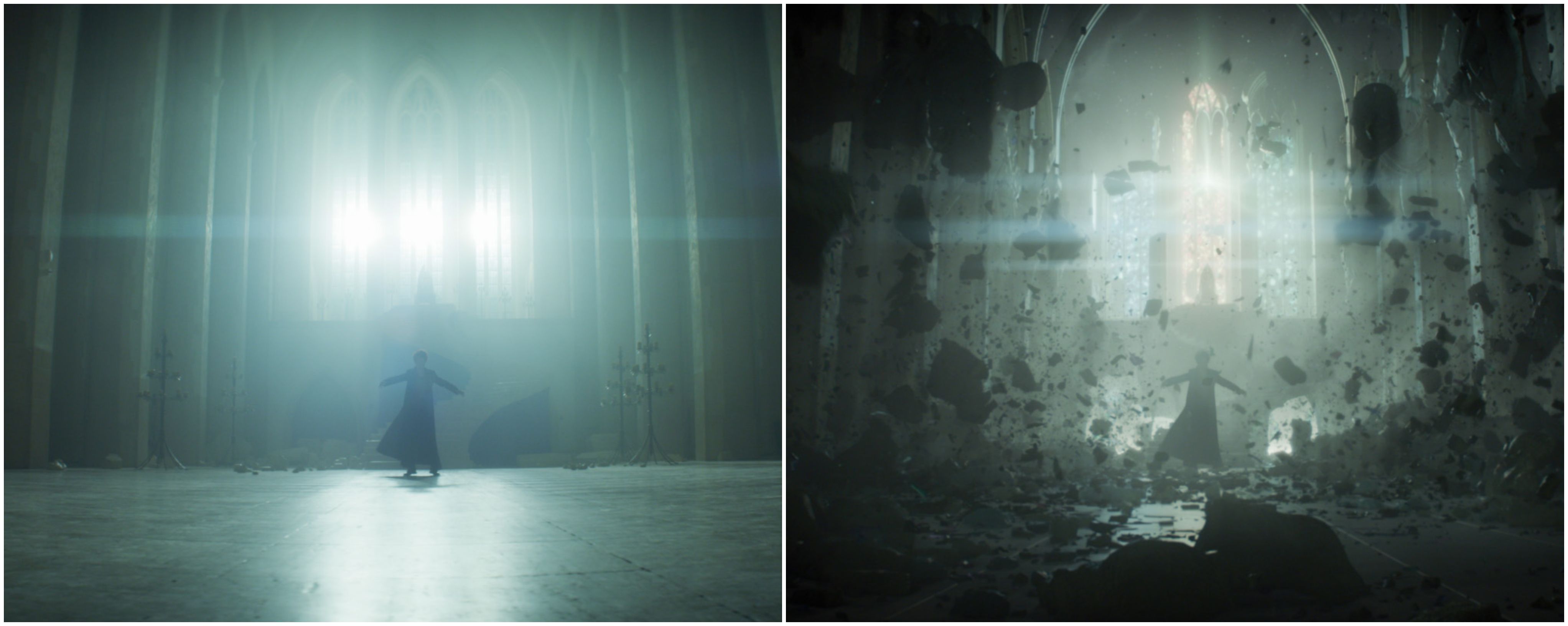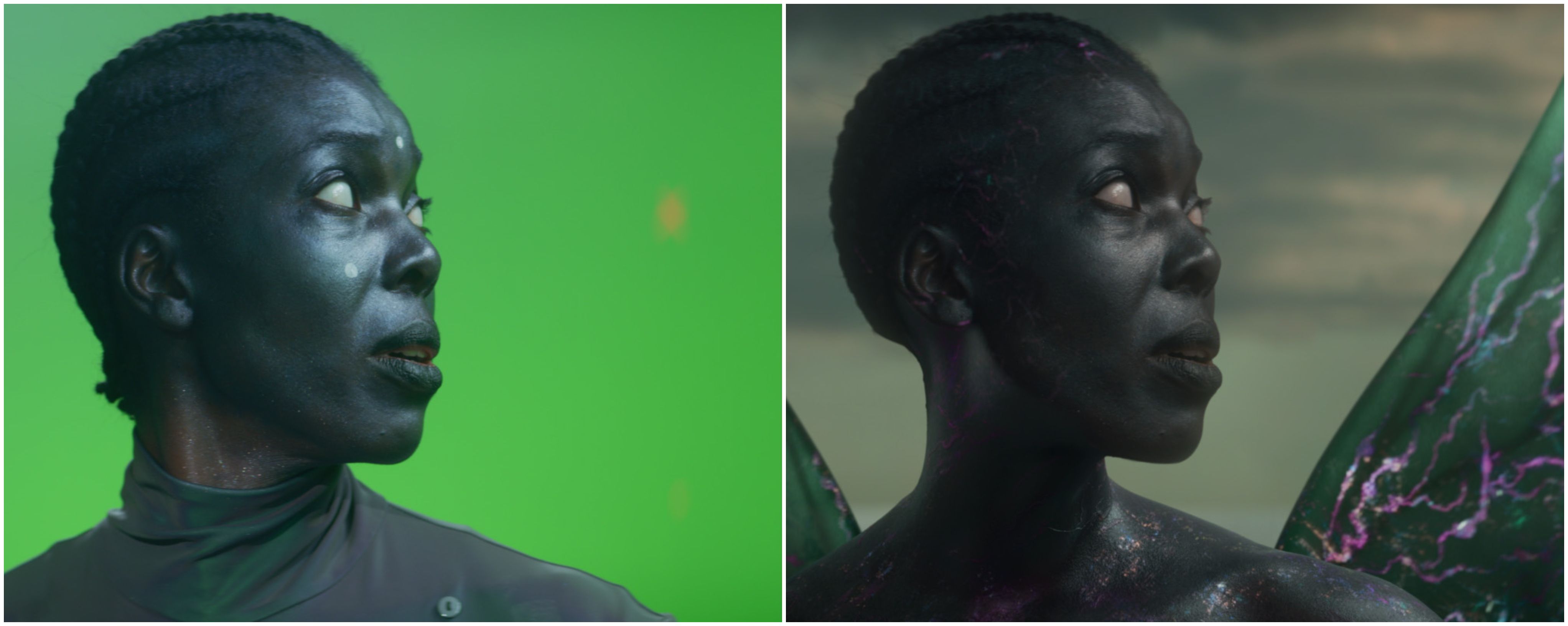The road to a successful adaptation of Neil Gaiman's The Sandman has been an especially long one — maybe not even a far cry from the number of years that Dream himself (Tom Sturridge) spent under lock and key, courtesy of Sir Roderick Burgess' (Charles Dance) magically-binding prison. An adaptation of the long-running DC Comics series languished in development hell for decades — it was initially a film starring Joseph Gordon-Levitt as Morpheus, but once the medium eventually shifted from big to small screen, it was clear the story of The Sandman was much better suited for television, where it had both the time and space given to illustrating the spectacular world of the Dreaming and all other realms beyond. Thanks in part to several VFX teams who were tapped to help render the much-loved characters and locations of Gaiman's Sandman world, the Netflix series — which first premiered last month on August 5 — saw phenomenal returns, earning over 393 million viewing hours in total as of September 18.
In the wake of The Sandman's first season premiere on Netflix, Collider was given the opportunity to speak with Rodeo FX, a visual effects company behind some of the most memorable sequences behind your favorite television shows, from Game of Thrones to Stranger Things to The Boys, as well as Watchmen, WandaVision, and more. Below, Rodeo FX project leader Raphael Letertre and animation supervisor Bernd Angerer walk us through their team's contributions to The Sandman's first season, from crafting the adorably playful Gregory the Gargoyle and the stunning nightmare Gault to rendering the otherworldly throne room of the Dreaming itself.
When Rodeo FX was given the assignment of working on some of The Sandman's most recognizable characters and settings, there was a clear favorite who emerged — perhaps the way he did for most of us watching at home, too. One of the earliest heartbreaking moments of The Sandman comes when Morpheus, newly freed from Burgess' prison after over 100 years of imprisonment, must retrieve some of his own power from previous creations in order to retrieve his essential tools. In order to do so, he must visit a portion of the Dreaming that contains a creature he himself once crafted — Gregory the Gargoyle. In terms of their approach to Gregory as a character, however, Angerer explained that the inspiration for his look was taken from a variety of sources, not merely the sort of twisted stone gargoyles that we often see perched atop old churches:
"We did take inspiration from dragons and gargoyles to create him. Early in Episode 1, you can see him perched on a tombstone; he's almost menacing, because he was originally created as a nightmare. But when we see him in Episode 2, he’s joyful and bouncing around like a puppy. We evolved his appearance and behavior and made him into this sweet, innocent gargoyle because of the way he was loved—it’s who he became. Gregory is a great example of how animation changes the way you experience and judge a creature. It was great to see the audience falling in love with him."
Building Gregory, however, involved a multi-step process, since he wasn't exactly created from the ground up with no foundation — as Angerer pointed out, much of what made this lovable gargoyle so memorable was in the script itself. Another part, however, came from the outside research the team was able to conduct in order to build in layers that made this character so complex, studying footage of pets in the process. Yet even more came from the performances that the actors rendered on-set, which Angerer added allowed them to develop a broader understanding of Gregory's reactions and intuition within the scene:
"If you look at Gregory in Episode 2, when Morpheus arrives and talks with Abel and Cain, you see him experiencing different emotions in the background. He’s happy, then he’s intrigued. As he witnesses them talk about him, you see the shock and then realization on his face. Finally, he comes forward with a look of understanding... and then we experience the emotional goodbyes. It was all done by playing with the facial features. We used human-like details like a little twitch in the eyes, the corner of the mouth, just a little frown, and even the wetness in the teary eyes as he gazes at Morpheus in his final moments. It also helped us to use the other actors on the set as references, the way their faces were emoting, so that we could replicate the same feeling with Gregory."
However, not every element of The Sandman had to be built from the ground up. When it came to Morpheus' majestic Throne Room within the realm of the Dreaming, a significant portion of those scenes were shot in a real, existing church in England, which the VFX team was then able to use as a foundation in order to transform it all into a much wider space. As Letertre explained:
"It was really great for us because it gave us a clear base to work with, and we know that actors prefer working on locations over green or blue screens. We had to transform it in the end, but you can still see some remnants of the real location in the columns, for example. One thing that we had to completely get rid of, however, was the ceiling. As the Throne Room is directly under a starry night sky lit up with entire galaxies."
It might seem like a simple process in terms of breaking apart and reducing the structure, especially when it came time for scenes in later episodes — like the face-off between Morpheus and John in the Dreaming — but the team also revealed that they had to recreate some aspects of these sequences that most viewers might be surprised to learn are actually a result of VFX. "When we started working on the Throne Room sequences, we realized the light was going to be our biggest challenge," Letertre told Collider. "The lighting from the original footage was pretty cold, it didn’t work. Our lighting artists had to entirely recreate this aspect of the shot and even the way it interacted with the actors or their shadows. Because the location is in another world, you can see that the light behaves differently.
"For example, when John Dee (David Thewlis) tries to burn the place down using the ruby, you can see the light beams from the windows are still there... even if the windows themselves are destroyed. The same type of effect can be seen with the stained-glass windows at the end of the room. There’s a magical glow that emanates from them, but you never really see the source."
Many of these so-called "invisible" elements, or aspects that are not readily apparent to audiences when viewing but are a product of VFX nevertheless, permeate through The Sandman's first season, and the Rodeo FX team pointed out some other instances where their designs had to be subtle but also incorporate a sense of realism throughout. "When you work with a creature like Gregory," Angerer said, "it’s pretty much all CG. But the actors are shot in a real location, so when you add the CG creature to the live location, there are small details you need to address in order to place them all in the same universe. When Morpheus comes to see Cain and Abel in Episode 2, there are dead leaves on the ground of the garden. So when Gregory walks around the garden, the fallen leaves have to move beneath his feet. It’s a small detail, but it makes his footsteps real to the setting and action."
One Sandman character who could never be described as subtle or small at all is Gault (Ann Ogbomo), a stunning nightmare first created by Dream himself who has greater aspirations of becoming more than what she was intended to be. Although she is known for her ability to alter her appearance, her true form is a universe in and of itself, with gorgeous colors and starbursts constantly moving beneath her skin.
The Rodeo team revealed that they wanted to preserve Ogbomo's "incredible performance" as much as possible, so they preserved her facial features but rendered her an entirely different body as seen in the series. "If you look closely at her, you can see galaxies and stars in her chest," Letertre explained. "It was a very beautiful job to animate it and make this 'suit' move and expand when she breathes or walks. Even on her arms, you see these little veins almost like ink traveling up to her shoulders."
Over the course of conversing with the Rodeo FX team, it was clear how much of their work on The Sandman was a true labor of love and appreciation — not just for the story, but for their part in being able to help bring it to life, from the incredibly minor details that might escape the audience's attention to the grand scope of places like Hell, Cain and Abel's respective domains, and more, which all lent themselves to the immersive feeling of Gaiman's world. "When we arrive at the shores of the Dreaming, which is Morpheus’ 'workshop,' we see this beautiful beach with gray sand and giant mountains in the background. This was entirely made in VFX. Nothing there is real, yet it really plunges you into this other universe," Letertre said.
The Sandman Season 1 is currently available to stream on Netflix. Check out the full VFX sizzle reel, as well as more exclusive behind-the-scenes images from Rodeo FX below:

